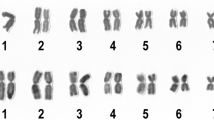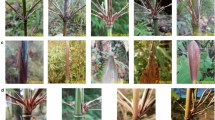Abstract
Despite the wealth of information on the ecology of Daphnia species, the systematics and phylogeny of the genus is still unresolved. The taxonomic uncertainties are based in part on the phenomenon of interspecific hybridization, which has been well documented for species of the D. galeata/cucullata/hyalina complexes. The occurrence of syntopic populations of up to three species and their three hybrids suggest niche differentiation, but very little is known about genetic divergence of hybridizing taxa and the potential consequences of hybridization (i.e. introgression). Since an operational species definition is necessarily based on information on the evolutionary mechanisms that result into the splitting of lineages, ecological and genetic consequences of interspecific hybridization have to be considered. In order to reveal the significance of hybridization and introgression, we combined several aspects of phylogenetic investigations within the D. galeata/cucullata/hyalina complexes. Furthermore we demonstrate how molecular markers contribute to an evaluation of species complexes.
Similar content being viewed by others
References
Amheim, N., T. White & W. E. Rainey, 1990. Application of PCR: organismal and population biology. BioScience 40: 174–182.
Arnold, M. L., 1992. Natural hybridization as an evolutionary process. Ann. Rev. Ecol. Syst. 23: 237–261.
Arnold, M. L., C. M. Buckner & J. J. Robinson, 1991. Pollen-mediated introgression and hybrid speciation in Louisiana irises. Proc. nam. Acad. Sci. USA 88: 1398–1402.
Aubert, J. & M. Solignac, 1990. Experimental evidence for mitochondrial DNA introgression between Drosophila species. Evolution 44: 1272–1282.
Barton, N. H. & G. M. Hewitt, 1985. Analysis of hybrid zones. Ann. Rev. Ecol. Syst. 16: 113–148.
Barton, N. H. & J. S. Jones, 1983. Mitochondrial DNA: new clues about evolution. Nature 306: 317–318.
Crawford, D. J., S. Brauner, M. B. Cosner & T. F. Stuessy, 1993. Use of RAPD markers to document the origin of the intergeneric hybrid xMargyracaena skottsbergii (Rosaceae) on the Juan Fernandez Islands. Am. J. Bot. 80: 89–92.
Crease, T. J., M. Lynch & K. Spitze, 1990. Hierarchical analysis of population genetic variation in mitochondrial and nuclear genes of Daphnia pulex. Mol. Biol. Evol. 7: 444–458.
DePamphilis, C. W. & R. Wyatt, 1990. Electrophoretic confirmation of interspecific hybridization in Aescules (Hippocastanaceae) and the genetic structure of a broad hybrid zone. Evolution 44: 1295–1317.
Ender, A., 1993. Identifizierung von nuklearen DNA-Markem in Daphnia-Hybrid-Komplexen: RAPD-Analyse. Diploma thesis. J.W. Goethe-Universität, Frankfurt, Germany.
Ender, A. & B. Schierwater, 1993. Identification of nuclear markers in Daphnia hybrid complexes using Random Amplified Polymorphic DNA (RAPD). Verh. dt. zool. Ges. 86.1: 45.
Felsenstein, J., 1985. Confidence limits on phylogenies: an approach using the bootstrap. Evolution 39: 783–791.
Flössner, D., 1993. Zur Kennmis einiger Daphnia-Hybriden. Limnologica 23: 71–79.
Flössner, D. & K. Kraus, 1986. On the taxonomy of the Daphnia hyalina-galeata complex (Crustacea: Cladocera). Hydrobiologia 137: 97–115.
Gießler, S., 1987. Mikroevolution und Populationsgenetik im Daphnia galeatalhyalina/cucullata-Komplex (Crustacea: Cladocera). Eine Freilandanalyse. Ph.D. thesis. Universität München, Germany.
Gill, F. B., A. M. Mostrom & A. L. Mack, 1993. Speciation in North American chickadees. 1. Patterns of mtDNA genetic divergence. Evolution 47: 195–212.
Harrison, R. G., 1989. Animal mitochondrial DNA as a genetic marker in population and evolutionary biology. Trends Ecol. Evol. 4: 6–11.
Harrison, R. G., 1990. Hybrid zones: windows on evolutionary process. Oxford Surv. Evol. Biol. 7: 69–128.
Hebert, P D. N., S. S. Schwartz & J. Hrbácek, 1989. Patterns of genotypic diversity in Czechoslovakian Daphnia. Heredity 62: 207–216.
Hewitt, G. M., A. W. B. Johnston & J. P. W. Young, 1991. Molecular techniques in taxonomy. NATO ASI Series H: Cell Biology 57. Springer-Verlag, Berlin.
Hillis, D. M. & C. Moritz (eds), 1990. Molecular systematics. Sinauer Associates, Sunderland, Mass.
Lewontin, R. C. & L. C. Birch, 1966. Hybridization as a source of variation for adaptation to new environments. Evolution 20: 315–336.
Lynch, M., 1985. Speciation in the Cladocera. Verh. int. Ver. Limnol. 22: 3116–3123.
Marchant, A. D., M. L. Arnold & P. Wilkinson, 1988. Gene flow across a chromosomal tension zone. I. Relicts of ancient hybridization. Heredity 61: 321–328.
Mort, M. A., 1991. Bridging the gap between ecology and genetics: the case of freshwater zooplankton. Trends Ecol. Evol. 6: 41–45.
Müller, J., 1993. Räumliche und zeidiche Variabilität der genetischen Struktur natürlicher Cladocerenpopulationen (Crustacea: Cladocera). Ph.D. thesis. J. Gutenberg-Universität, Mainz, Germany.
Müller, J. & A. Seitz, 1993. Habitat partitioning and differential vertical migration of some Daphnia genotypes in a lake. Arch. Hydrobiol. Beih. Ergebn. Limnol. 39: 167–174.
Müller, J. & A. Seitz, 1994. Influence of differential natality and mortality on temporal fluctuations of Daphnia genotypes in natural populations. In Beaumont, A. R. (ed.), Genetics and Evolution of Aquatic Organisms. Chapman & Hall, Lond.: 342–350.
Nason, J. D. & N. C. Ellstrand, 1993. Estimating the frequencies of genetically distinct classes of individuals in hybridized populations. J. Hered. 84: 1–12.
Otte, D. & J. A. Endler (eds), 1989. Speciation and its consequences. Sinauer Associates, Sunderland, Mass., 679 pp.
Peters, R. H. & R. de Bernardi (eds), 1987. Daphnia. Memorie Dell'Istituto Italiano di Idrobiologia. 45. Verbania Pallanza, Palanza, Italy, 502 pp.
Powell, J. R., 1983. Interspecific cytoplasmic gene flow in the absence of nuclear gene flow: evidence from Drosophila. Proc. nam. Acad. Sci. USA 80: 492–495.
Schierwater, B., A. Ender & B. Streit, 1993. The use of RAPD markers for molecular phylogenies. Verh. dt. zool. Ges. 86.1: 58.
Schwenk, K., 1993. Interspecific hybridization in Daphnia: distinction and origin of hybrid matrilines. Mol. Biol. Evol. 10: 1289–1302.
Schwenk, K. & P. Spaak, 1995. Evolutionary and ecological consequences of interspecific hybridization in cladocerans. Experientia (in press).
Sneath, P. H. A. & R. R. Sokal, 1973. Numerical Taxonomy. W.H. Freeman, San Francisco.
Solignac, M. & M. Monnerot, 1986. Race formation, speciation, and introgression within Drosophila simulans, D. mauritiana, and D. sechellia inferred from mitochondrial DNA analysis. Evolution 40: 531–539.
Spaak, P., 1994. Genetical ecology of a coexisting Daphnia hybrid species complex. Ph.D. thesis, University of Utrecht, The Netherlands.
Spaak, P. & J. R. Hoekstra, 1993. Clonal structure of the Daphnia population in Lake Maarsseveen: its implications for diel vertical migration. Arch. Hydrobiol. Beih. Ergebn. Limnol. 39: 157–165.
Streit, B., T. Städler, K. Schwenk, A. Ender, K. Kuhn & B. Schierwater, 1994. Natural hybridization in freshwater animals: ecological implications and molecular approaches. Naturwissenschaften 81: 65–73.
Sturmbauer, C. & A. Meyer, 1992. Genetic divergence, speciation and morphological stasis in a lineage of African cichlid fishes. Nature 358: 578–581.
Swofford, D. L., 1990. PAUP: Phylogenetic analysis using parsimony, version 3.0.s Illinois Natl. Hist. Surv., Champaign, IL.
Taylor, D. J. & P D. N. Hebert, 1992. Daphnia galeata mendotae as a cryptic species complex with interspecific hybrids. Limnol. Oceanogr. 37: 658–665.
Taylor, D. J. & P. D. N. Hebert, 1993. Habitat-dependent hybrid parentage and differential introgression between neighboringly sympatric Daphnia species. Proc. nam. Acad. Sci. USA 90: 7079–7083.
Templeton, A. R., 1980. The theory of speciation via the founder principle. Genetics 94: 1011–1038.
Welsh, J. & M. McClelland, 1990. Fingerprinting genomes using PCR with arbitrary primers. Nucleic Acids Res. 18: 7213–7218.
Weider, L. J., 1993. Niche breadth and life history variation in a hybrid Daphnia complex. Ecology 74: 935–943.
Weider, L. J. & H. G. Wolf, 1991. Life-history variation in a hybrid species complex of Daphnia. Oecologia 87: 506–513.
Williams, J. G. K., A. R. Kubelik, K. J. Livak, J. A. Rafalski & S. V. Tingey, 1990. DNA polymorphisms amplified by arbitrary primers are useful as genetic markers. Nucleic Acids Res. 18: 6531–6535.
Wolf, H. G., 1987. Interspecific hybridization between Daphnia hyalina, D. galeata, and D. cucullata and seasonal abundances of these species and their hybrids. Hydrobiologia 145 (Dev. Hydrobiol. 35): 213–217.
Wolf, H. G. & M. A. Most, 1986. Inter-specific hybridization underlies phenotypic variability in Daphnia populations. Oecologia 68: 507–511.
Author information
Authors and Affiliations
Rights and permissions
About this article
Cite this article
Schwenk, K., Ender, A. & Streit, B. What can molecular markers tell us about the evolutionary history of Daphnia species complexes?. Hydrobiologia 307, 1–7 (1995). https://doi.org/10.1007/BF00031991
Issue Date:
DOI: https://doi.org/10.1007/BF00031991




